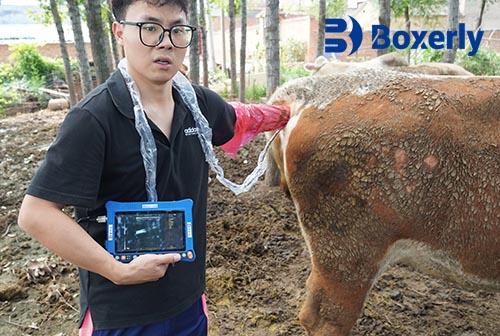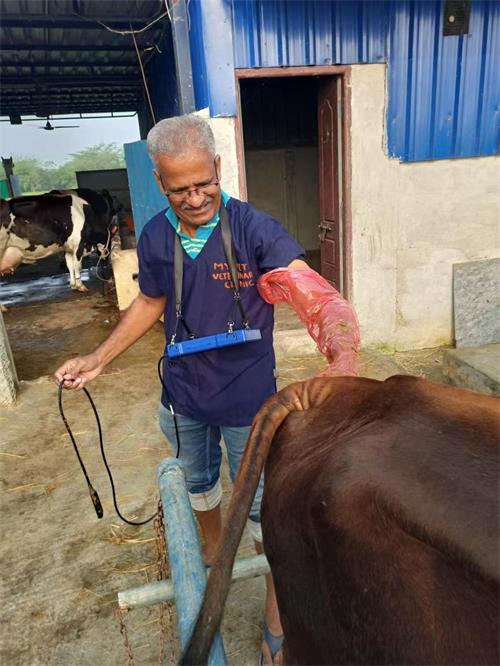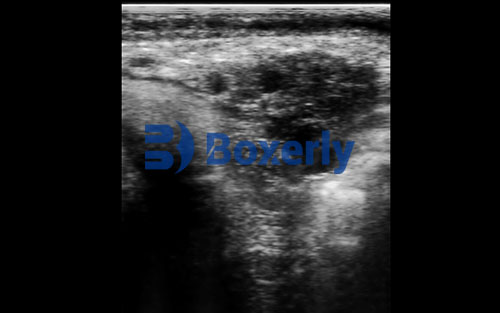In modern veterinary medicine, Point of Care Ultrasound (POCUS) has rapidly become an indispensable tool for farm animal veterinarians. Whether you're dealing with cattle, pigs, horses, sheep, or camels, POCUS provides immediate, valuable insights that can significantly impact diagnosis, treatment decisions, and overall animal welfare. But what exactly is POCUS, and why is it revolutionizing veterinary practice?

What is Point of Care Ultrasound?
Point of Care Ultrasound refers to the use of portable ultrasound devices directly at the site where the animal is examined or treated — be it a barn, pasture, stable, or remote desert camp. Unlike traditional ultrasound exams that require moving animals to specialized facilities, POCUS is designed for immediate use by the veterinarian during their clinical evaluation.
By offering real-time imaging of soft tissues, organs, and even blood flow, POCUS enables vets to make faster and more accurate decisions. The technology has become lightweight, battery-operated, and durable, making it ideal for the tough environments where farm animals are kept.

How Vets Use POCUS in Farm Animals
POCUS can be applied to a wide range of clinical situations in large animals, including:
Reproductive Assessment: Quickly confirming pregnancy in cows, sheep, and camels without the need for rectal palpation.
Respiratory Evaluation: Diagnosing pneumonia or pleural effusion in calves and pigs.
Abdominal Examinations: Identifying conditions like uterine infections, intestinal blockages, or peritonitis.
Musculoskeletal Injuries: Assessing tendon, ligament, or joint injuries in working horses.
Emergency Situations: Detecting internal bleeding or organ damage following trauma.
The ability to perform these assessments instantly at the animal’s location reduces stress on the animal, cuts down diagnostic time, and often lowers the cost of care for farmers.
Advantages of POCUS for Farm Veterinarians
There are several key benefits to incorporating Point of Care Ultrasound into daily veterinary practice:
Speed and Efficiency: Immediate access to diagnostic information saves crucial time, particularly in emergencies or critical care cases.
Portability: Handheld ultrasound machines are rugged and can withstand harsh weather conditions common in agricultural settings.
Non-Invasive Nature: POCUS minimizes the need for invasive diagnostic procedures, promoting animal welfare.
Improved Decision-Making: Real-time visualization improves the accuracy of clinical judgments, leading to better treatment outcomes.
Farmer Confidence: When farmers can see ultrasound images themselves, it often helps build trust in veterinary advice and interventions.
Limitations and Challenges
While POCUS offers numerous advantages, it does have its limitations. Image quality from portable devices may not match that of larger, stationary machines. Operator skill also plays a major role; veterinarians must be trained to recognize normal versus abnormal findings.
Additionally, in very large animals like mature bulls or camels, body size and thickness can limit penetration depth, making certain structures harder to visualize.
[Image Placement: Insert a diagram illustrating different ultrasound scanning sites on a horse, cow, and sheep.]
Choosing the Right Equipment
When selecting a POCUS device for farm animal practice, several factors should be considered:
Durability: Equipment must tolerate dust, moisture, and physical shocks.
Battery Life: Long-lasting batteries are crucial when working in remote areas.
Probe Selection: Linear probes are useful for musculoskeletal exams, while convex probes are better suited for abdominal imaging.
Software Features: Some machines offer presets specifically for large animal species, simplifying operation for veterinarians.
Brands like BXL are producing veterinary-specific ultrasound machines designed to meet these exact needs, helping vets deliver better care in demanding field conditions.

Future of POCUS in Veterinary Medicine
The future of POCUS looks incredibly promising. Advancements in artificial intelligence are beginning to assist with real-time interpretation, making ultrasound even more accessible to less-experienced users. Meanwhile, telemedicine integration means that images can be shared with specialists instantly, no matter how remote the farm is.
As technology continues to improve, it’s likely that Point of Care Ultrasound will become a standard tool in every farm veterinarian’s kit — much like a stethoscope is today.
Conclusion
Point of Care Ultrasound is changing the way veterinarians manage the health of farm animals. By providing real-time, on-site diagnostic capabilities, POCUS enhances animal welfare, improves the speed and accuracy of diagnosis, and strengthens the bond between veterinarians and farmers. For any vet working with cattle, pigs, horses, sheep, or camels, mastering POCUS isn't just an advantage — it's becoming a necessity.
tags:


